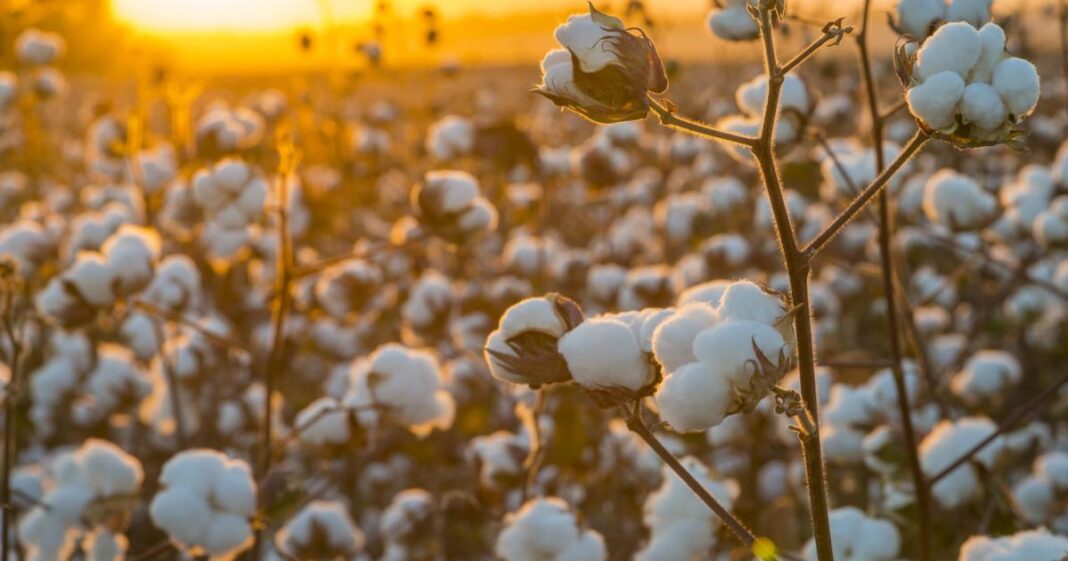This is the second of a four-part series taking a closer look at how 72 companies in four industries — beverage, apparel, food and high-tech — performed in Ceres’ new Valuing Water Finance Initiative Benchmark report, which assesses how companies are valuing and acting on water as a financial risk and driving the systemic changes needed to protect freshwater systems around the world.
The fashion industry is a thirsty one — and much of the water it uses to make the clothes we buy is used to grow cotton. The problem is, by 2040, half of the world’s cotton-growing regions will likely be exposed to severe climate threats — including water scarcity and extreme weather — posing significant financial risk to apparel companies.
That’s why, as part of making their supply chains more resilient, companies must adopt stronger commitments to address how their cotton suppliers use and affect water.
Assessing impacts and risks
From fallowed fields to rising irrigation costs, the financial fallout from water-related impacts to cotton and other agricultural commodities is playing out across the globe. Cotton production is accelerating these risks, contributing to pollution and water scarcity. Growing cotton uses 16 percent to 24 percent of the insecticides and up to 40 percent of pesticides applied to fields globally, contaminants that threaten clean water supplies for communities and ecosystems and that are contributing to the deterioration of aquatic life. With a quarter of all freshwater fish species at risk of extinction, this is of particular concern.
By 2040, half of the world’s cotton-growing regions will likely be exposed to severe climate threats — including water scarcity and extreme weather.
As apparel sales continue to grow, investors will be looking for apparel companies that rely heavily on cotton to have strong targets for reducing their impacts and reliance on water. Water use and pollution, as well as the protection of freshwater ecosystems are among six areas of focus in the Corporate Expectations laid out in the Ceres Valuing Water Finance Initiative, a global investor-led effort to work with large companies on tackling water as a financial risk and making changes needed to better protect water supplies.
Our recent benchmark, which assesses the water management practices of 72 companies — including 11 large apparel companies — sheds light on how the apparel industry is responding to these water risks. Many companies are taking positive steps that other apparel companies can follow.
Use cotton from sustainable sources
Gap Inc., for instance, committed to sourcing 100 percent of cotton from more sustainable sources by 2025. This includes using organically grown cotton — more water efficient and less polluting than conventionally grown cotton — as well as cotton sourced from farmers transitioning to growing certified organic cotton. The company says more sustainable sources may also include recycled cotton, cotton grown using regenerative agriculture practices — which can improve soil’s resistance to drought — and cotton certified by Better Cotton (formerly Better Cotton Initiative or BCI). As part of its strategy, Gap Inc.’s Banana Republic brand committed to fund and source cotton through Action for Social Advancement, which trains cotton farmers on converting to organic practices. As of 2022, Gap had achieved 81 percent of its more sustainable sourcing goal.
As part of making their supply chains more resilient, companies must adopt stronger commitments to address how their cotton suppliers use and affect water.
In 2023, H&M sourced 100 percent of its cotton from recycled, organic and other more sustainable sources, including certified Better Cotton, which helped the company save 40 billion gallons of water and avoid using 93,200 kilograms of pesticides. H&M’s use of certified Better Cotton also helped produce $32 million additional profit for farmers. These steps are part of H&M’s long-term vision and 2030 vision and roadmap for cotton, which focuses on scaling recycled, regenerative and sustainable cotton production, and investing in innovations to increase the quality and durability of recycled cotton.
Set water targets for raw materials suppliers
These steps are encouraging, but more work is needed to ensure sustainable water management strategies at apparel companies do not overlook their cotton suppliers.
The apparel companies we analyzed in our benchmark primarily focus their water-related supply chain targets on assembly and manufacturing suppliers. Most of those we assessed don’t specifically include cotton and other raw material suppliers in their targets for reducing water use and pollution across their value chains.
Inditex is among the companies working to address this gap. The company has set a target to reduce water consumption in its supply chain 25 percent by 2025, including promoting raw material cultivation practices that reduce water consumption.
Apparel companies’ work to source more sustainable cotton shows they recognize risks associated with this key commodity. It also points to the potential for greater action as companies work to meet water-related challenges at the pace and scale needed to protect their business as well as the communities and ecosystems impacted by their supply chains.
